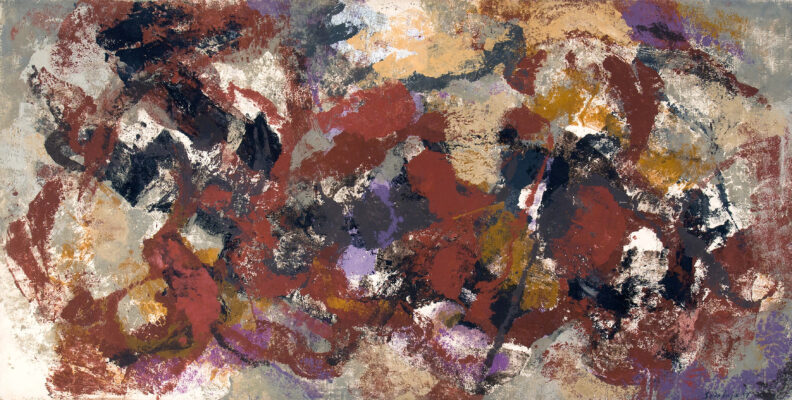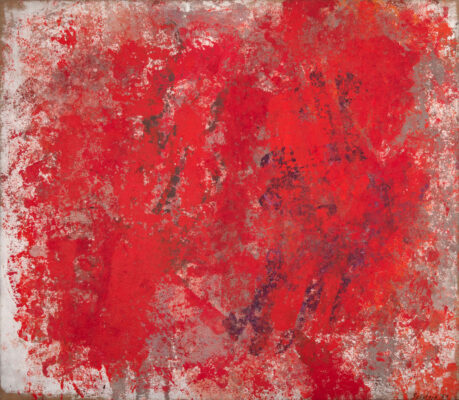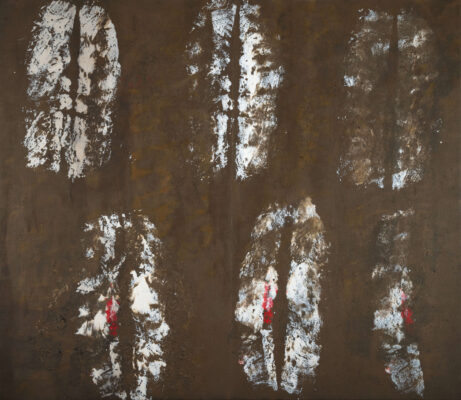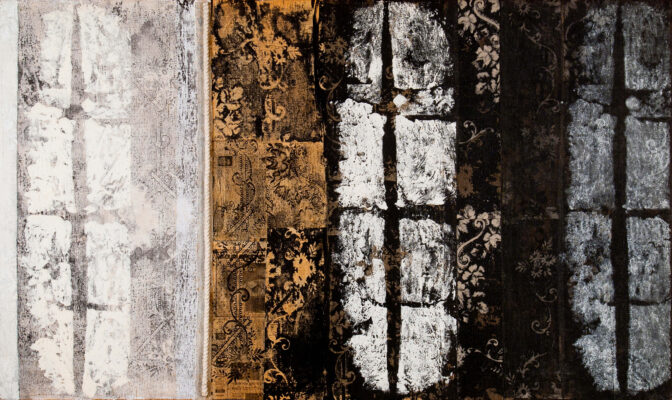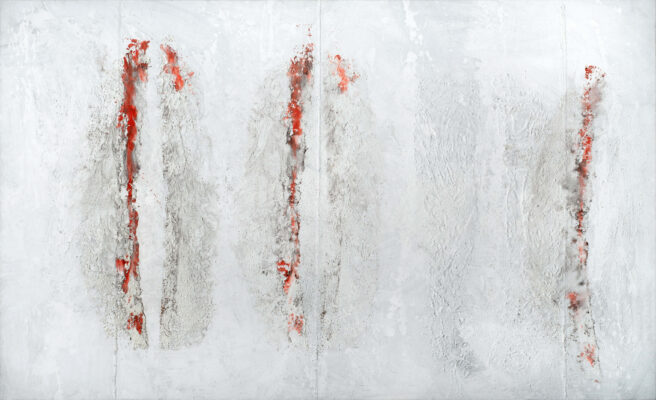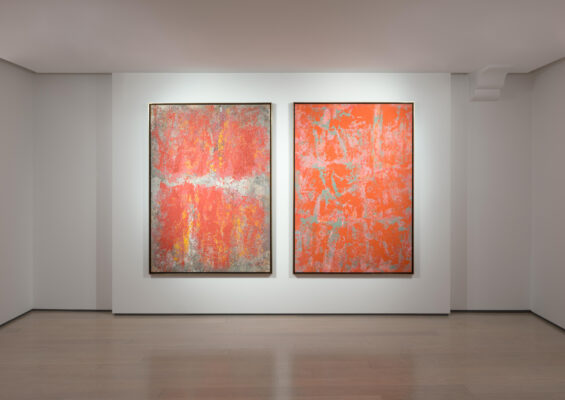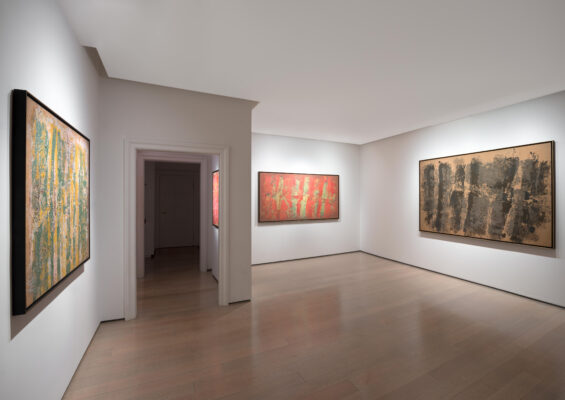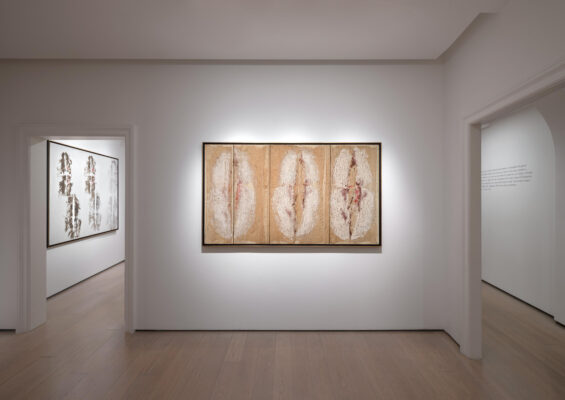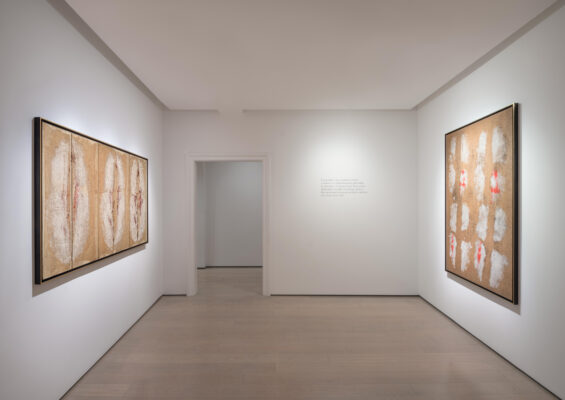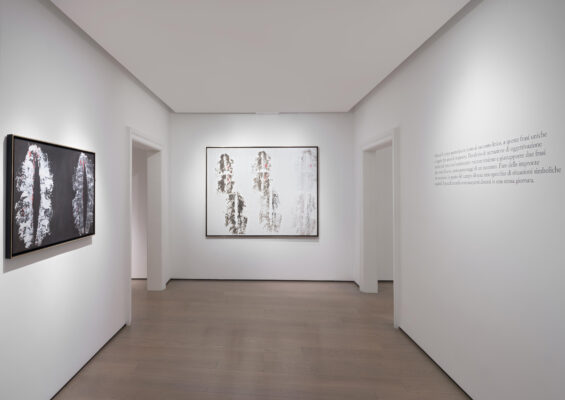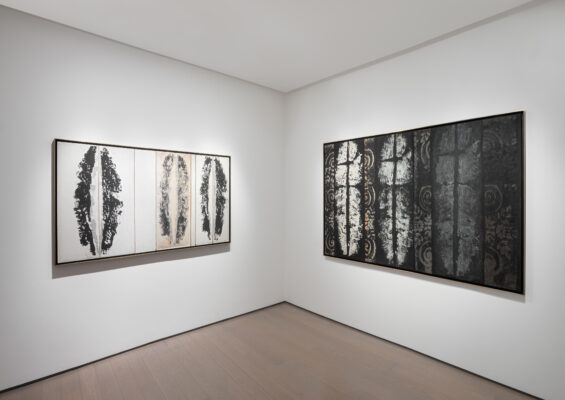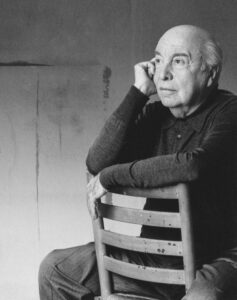curated by Giuseppe Appella
16.12.2023 — 30.04.2024
Toti Scialoja, Impronte
curated by Giuseppe Appella
16.12.2023 - 30.04.2024Show introduction
The exhibition curated by Giuseppe Appella and focused on a selection of thirty paintings from the Foundation named after the artist is dedicated to the best-known season of Toti Scialoja’s expressive research, that of the Impronte [imprints] created between 1957 and 1963. Toti Scialoja, returning from New York where he went in 1956 for a stay of a few months spent experimenting with absolute freedom of gesture, made a radical change in this period: he abandoned traditional painting to paint with papers soaked in colour, and then placed his impronta on the canvas, while at the same time relying on that blind automatism, as if to discover the most intimate reasons of the soul.The exhibitions in New York at Catherine Viviano Gallery in October 1956, then in Rome at Galleria La Tartaruga with Afro and Burri in February 1957 and, three months later, at Galleria Schneider present works whose titles (Interruzione, Sovrapposto, Irritazione) hint at the process of approaching a free and happy painting, far from the imaginary museum created in over twenty years of disciplined commitment to art, poetry and criticism. The first to notice this was a poet, Murilo Mendes, in a letter to Scialoja dated May 21, 1957: “A sensation of strength and spatial grandeur emanates from your paintings: for you, colour is also space.”
In this space, thanks to the solitude of Procida which brought to the foreground that movement experienced since the first expressionist passions, the released forces are capable, through progressive impulses, of establishing direct contact between the artist and the canvas, of communicating emotions.The exhibition opens with Il sette di settembre, 1957, one of the first paintings created with the “stamping” technique. Every intervention on the canvas nailed to the ground is now superseded by a new procedure: “Filling a sheet of paper with colour, turning it over onto the canvas and stamping it by clapping it hard with my hands was the solution which apparently abolished my ‘choice’ and entrusted my intervention on the surface solely to a ‘fatality’”, the artist recalls in a testimony reported in the catalogue of the anthology at Galleria Nazionale di Arte Moderna in Rome in 1991.
Large canvases from 1958, such as Ininterrotto or Sabato sera, are the prelude to the next turning point, when his impronte become serial as in Due orizzonti n. 2, 1959. “The ‘repetition’ – the ‘form-imprint’ that repeats itself on the painted page, remembering what has been and predicting what will be, in a rhythmic flow of time – is now the privileged path for Scialoja towards the truth of painting: and the transition from existentialism and the voluntarism of the gesture to the clarity of phenomenological thought comes true...” (Fabrizio D’Amico, 1999).
The exhibition continues with Dal teatro, belonging to the series of 1960 canvases, many of which were created in the months Scialoja spent in New York, in a loft on Greenwich Street. The paintings created during his second stay in the United States, from March to September, mark a departure from his previous work, in the sense of monumentality and essentiality. They are clearly the result of sensitivity and training rooted in a land different from that overseas, far from an open adherence to American experiences, and therefore governed, on the contrary, by a severe but irrepressible urgency for a completely European “form”.
Between 1961 and 1964 Scialoja lived in Paris, where he worked intensely in a studio on rue de la Tombe Issoire. The canvases of that period are characterized by the use of anti-canonical materials such as rope, gauze and lace, as in Issoire argento, 1961, and in Corda bianca, 1963. The rope, in particular, isolates contiguous but distinct fields on the canvas, in in which the imprint is inscribed to visualize a temporal and rhythmic process, evident in the alternation of full and empty, of scansion and pause, of presence and absence. Merleau-Ponty’s lectures at the Sorbonne are the counterpart to the irrationalism experienced in New York.
The exhibition, organized in collaboration with Fondazione Toti Scialoja, renews Galleria dello Scudo interest in the artist, after the exhibition of 1999-2000 winter focused on his pictorial research post 1955, and the show between December 2006 and February 2007 dedicated to the 1983-1997 season. On the occasion of the exhibition now scheduled in Verona, there will be the presentation of the Catalogo generale dei dipinti e delle sculture 1940-1998, edited by Giuseppe Appella and published by Silvana Editoriale. These initiatives, after the release of Giornale di pittura with Quodlibet in 2022 and the collection of contributions by various authors with Electa in 2023, reaffirm the centrality of the figure of Scialoja in the artistic panorama of the post-World War II period.
